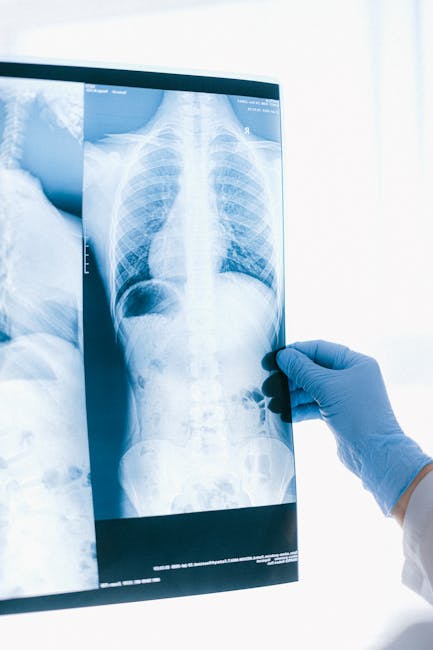Matching Chest Trauma Types to Clinical Manifestations: A Comprehensive Guide
Chest trauma, encompassing injuries to the thoracic cage, its contents, and surrounding structures, presents a diverse spectrum of clinical manifestations. Accurate identification of the injury type is crucial for timely and effective management, influencing prognosis and survival rates. This comprehensive guide aims to delineate the correlation between various types of chest trauma and their corresponding clinical presentations.
Blunt Chest Trauma
Blunt chest trauma, often resulting from motor vehicle accidents, falls, or assaults, is characterized by forces impacting the chest without penetrating the skin. The severity of injuries varies greatly, ranging from minor contusions to life-threatening conditions like flail chest and cardiac tamponade.
Flail Chest
A flail chest occurs when multiple ribs fracture in two or more places, creating a segment of the chest wall that moves paradoxically during respiration. This paradoxical movement hinders effective ventilation, leading to hypoxemia and respiratory distress. Clinical manifestations include:
- Pain at the site of the fractures
- Paradoxical chest wall movement (inward during inspiration, outward during expiration)
- Shortness of breath (dyspnea)
- Tachypnea (rapid breathing)
- Hypoxia (low blood oxygen levels)
- Decreased breath sounds over the affected area
- Possible cyanosis (bluish discoloration of skin and mucous membranes)
Pulmonary Contusion
Pulmonary contusion, or lung bruise, is a common complication of blunt chest trauma. It involves bleeding and edema within the lung parenchyma, impairing gas exchange. Clinical manifestations often manifest gradually:

- Initially, minimal symptoms, possibly just chest pain
- Progressive dyspnea and hypoxia
- Tachypnea
- Hemoptysis (coughing up blood)
- Crackles or rales on auscultation (abnormal lung sounds)
- Decreased breath sounds
- Potentially, the development of Acute Respiratory Distress Syndrome (ARDS)
Cardiac Contusion
Cardiac contusion, or a bruise to the heart muscle, can result in significant arrhythmias and impaired cardiac function. The severity ranges from asymptomatic to life-threatening. Clinical manifestations are highly variable:
- Chest pain
- Arrhythmias (e.g., atrial fibrillation, ventricular tachycardia)
- Hypotension (low blood pressure)
- Cardiogenic shock
- ECG abnormalities
- Elevated cardiac enzymes (troponin)
Aortic Injury
Blunt trauma can cause tears or ruptures in the aorta, often at the aortic isthmus. This is a catastrophic injury with a high mortality rate. Clinical manifestations can be subtle initially or dramatically obvious:
- Chest pain, potentially radiating to the back
- Hypotension
- Pulse deficits (difference in pulse strength between the upper and lower extremities)
- Widened mediastinum on chest x-ray
- Possible left-sided hemothorax
- Sudden death
Penetrating Chest Trauma
Penetrating chest trauma involves injury caused by objects that pierce the chest wall, such as knives or bullets. The severity depends on the location, depth, and velocity of the penetrating object. Potential injuries include:
Pneumothorax
Pneumothorax is a collapsed lung caused by air entering the pleural space. Clinical manifestations include:

- Sudden onset of sharp chest pain
- Shortness of breath
- Tachypnea
- Decreased or absent breath sounds on the affected side
- Hyperresonance to percussion (abnormally loud sound when tapping the chest)
- Possible cyanosis
Hemothorax
Hemothorax refers to blood accumulation in the pleural space. Clinical manifestations are similar to pneumothorax but with additional signs of blood loss:
- Chest pain
- Shortness of breath
- Hypotension
- Tachycardia (rapid heart rate)
- Decreased breath sounds
- Dullness to percussion
- Signs of hypovolemic shock
Diaphragmatic Rupture
Penetrating trauma, particularly to the lower chest, can cause a rupture of the diaphragm, leading to herniation of abdominal contents into the chest cavity. Clinical manifestations may be delayed or subtle:

- Chest pain
- Shortness of breath
- Abdominal pain
- Bowel sounds heard in the chest
- Evidence of abdominal organs in the chest on imaging
Cardiac Tamponade
Penetrating trauma can result in cardiac tamponade, a life-threatening condition where blood accumulates in the pericardial sac, compressing the heart. Clinical manifestations present as Beck’s triad:
- Hypotension
- Distended neck veins (jugular venous distension)
- Muffled heart sounds
In addition to Beck’s triad, patients may experience shortness of breath, chest pain, and shock.
Conclusion
Accurate assessment and correlation of chest trauma type with clinical manifestations are crucial for effective management. This guide provides a comprehensive overview, highlighting the importance of recognizing subtle and overt signs. Immediate medical attention is paramount in all cases of suspected chest trauma to prevent life-threatening complications.

